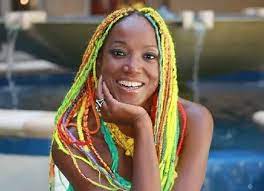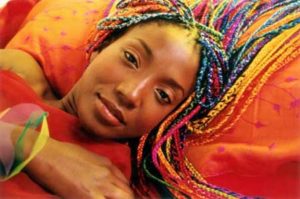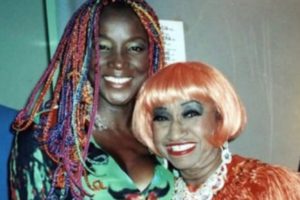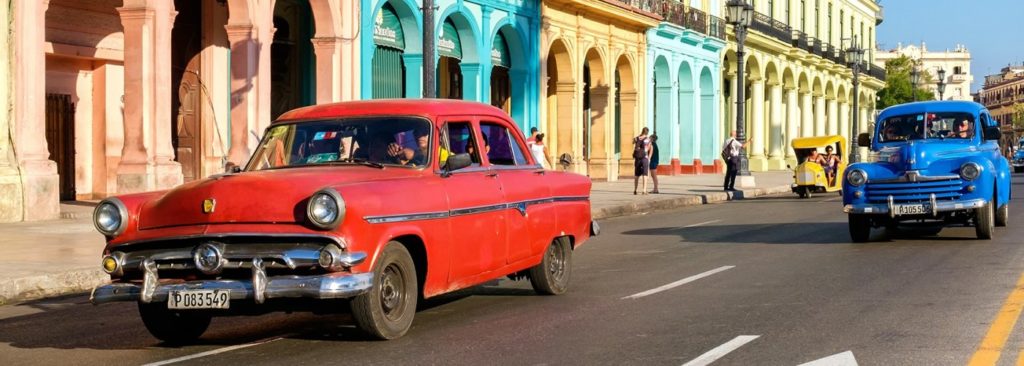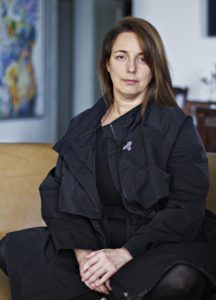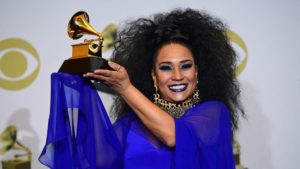
ARGENTINA AND CUBA: RELATIONS BETWEEN THE REPUBLICS. HISTORICAL SUMMARY.
Argentina-Cuba relations refer to diplomatic relations between the Argentine Republic and the Republic of Cuba. Both nations are members of the Latin American Integration Association, the Community of Latin American and the Caribbean States, the United Nations, and the Organization of American States.
HISTORY OF DIPLOMATIC RELATIONS
Argentina and Cuba share a common history in the fact that both nations were once part of the Spanish Empire. In 1816, Argentina gained its independence and in 1902, Cuba gained its independence after the Spanish-American War. On May 12, 1909, Argentina and Cuba officially established diplomatic relations. Initially, relations were limited between the two nations due to their geographical distances.
At the triumph of the revolution in January 1959, Fidel Castro entered Havana and took control of the country. After the revolution, Argentina maintained relations with the new Cuban government and in May 1959, Castro paid a visit to Argentina and met with Argentine President Arturo Frondizi. In August 1961, the Argentine-born Cuban revolutionary commander, Ernesto “Che” Guevara secretly returned to Argentina for a few hours and met with President Arturo Frondizi and an aunt of his before leaving the country.
In December 1961, Cuba declared itself a Marxist and a socialist and aligned itself with the Soviet Union. As a result, and under pressure from the United States, on January 21, 1962, Cuba was expelled from the Organization of American States (OAS) and in September 1962, the United States imposed a total embargo on Cuba. That same year, at the insistence of the United States, Argentina and all Latin American nations (with the exception of Mexico) broke diplomatic relations with Cuba in an effort to isolate the Castro government.
On May 28, 1973, under President Héctor Cámpora, Argentina became the third nation (after Chile and Peru) to reestablish diplomatic relations with Cuba. Former Cuban President Osvaldo Dorticós Torrado became ambassador to Argentina Relations between the two nations greatly improved under the presidency of Juan Perón. Argentina granted Cuba a loan of $ 200 million a year for six years. During the Argentine military dictatorship (1976-1983), Cuba maintained relations with Argentina.
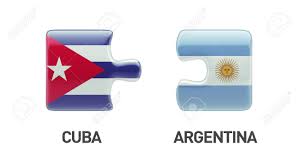
During the Falklands War between Argentina and the United Kingdom between April-June 1982; Cuba supported Argentina’s rights over the Falkland Islands and channeled arms to Argentina from Libya through Brazil.
THE ARGENTINE “MONTONEROS” IN CUBA
Los Montoneros was an Argentine guerrilla organization that identified with the Peronist left and that developed the armed struggle between 1970 and 1979, although its period of maximum power lasted until 1976.
Towards the end of the 1960s the three main leaders of this group – Mario Firmenich, Roberto Cirilo Perdia, and Fernando Hugo Vaca Narvaja – lived hidden in the basement of the Cuban embassy in Mexico City, after an Argentine military command tried to murder them in this country.
Its initial objectives were the destabilization of the de facto government calling itself “Argentine Revolution” (Onganía, Levingston, Lanusse / 1966 – 1973) and the return to power of General Juan Domingo Perón; later, once Héctor José Cámpora assumed the presidency, their actions were directed to the establishment in Argentina of a political system that they called “National Socialism”.

The Cuban government played a fundamental role in the development of the Argentine guerrilla, within the framework of a vast plan to export the revolution to the entire region. There was a Cuban organization, the America Department, that dealt with this matter, under the command of Commander Manuel Piñeiro, “Barbarroja”, which functioned until 1991. Several of the guerrilla leaders were trained in Cuba. For example, Fernando Abal Medina, the first head of Montoneros, and his partner, Norma Arrostito, “Gaby”. The entire staff of the Revolutionary Armed Forces, the FAR, took training courses, both political and military, on the island. The Montoneros command functioned from Cuba.
After the second contingent of terrorist organizations traveled to Cuba to receive instruction, the presence on the island of the militants of the Montoneros organization became more frequent, which appeared publicly in 1969. (In 1964 the Argentine government reported that 300 Argentine troops already had been educated in Cuba. On the other hand, in 1967 and 1967 more than 180 Argentines attended the “Tricontinental” and the “OLAS” in Havana (See THE BOTIN OF LOS MONTONEROS IN CUBA)
PRESIDENTIAL VISITS
In October 1986, Argentine President Raúl Alfonsín made an official visit to Cuba, becoming the first Argentine president to do so. In 1995, Castro returned to Argentina to attend the 5th Ibero-American Summit in Bariloche where he met with Argentine President Carlos Menem. Relations between the two nations were strained when in 1997, during the 7th Ibero-American Summit on Margarita Island, Venezuela, President Menem called for democracy in Cuba and an end to human rights violations on the island.8 In November 1999, President Menem refused to attend the IX Ibero-American Summit held in Havana.
Relations between Argentina and Cuba improved during the presidency of Néstor Kirchner. In 2003, Fidel Castro returned to Argentina to attend the inauguration of President Kirchner. Castro last returned to Argentina in 2006 to attend the Mercosur summit in Córdoba. In July 2006, Fidel’s younger brother, Raúl Castro, assumed the position of interim President of Cuba and in 2008, Raúl became the official President of Cuba. In 2009, Argentine President Cristina Fernández de Kirchner visited Cuba and visited Fidel and Raúl Castro. President Fernández de Kirchner would visit Cuba again in 2013.
In December 2015 Mauricio Macri became President of Argentina. In October 2016, Presidents Raúl Castro and Mauricio Macri met in Cartagena de Indias, Colombia. Both leaders attended as witnesses to the signing of the peace treaty between the Colombian Government and the Revolutionary Armed Forces of Colombia (FARC). During their meeting, both presidents announced that the two governments hope to reach an agreement on Cuba’s outstanding debt with Argentina of $ 11 billion of its original debt of $ 1.3 billion that Cuba borrowed in 1973 (plus unpaid interest ).

Argentine President: Alberto Fernandez (2019).
President Raúl Alfonsín (1986)
President Cristina Fernández de Kirchner (2009, 2013)
President of Cuba Fidel Castro (1959, 1995, 2003, 2006)
President Miguel Díaz-Canel (2019)
There are direct flights between Argentina and Cuba with Cubana de Aviación.
Business relationships
In 2017, trade between the two nations totaled more than $ 200 million USD. Argentina’s exports to Cuba are mainly based on food, while Cuban exports to Argentina are mainly pharmaceuticals and medicines.
Resident diplomatic missions
Argentina has an embassy in Havana.
Cuba has an embassy in Buenos Aires.
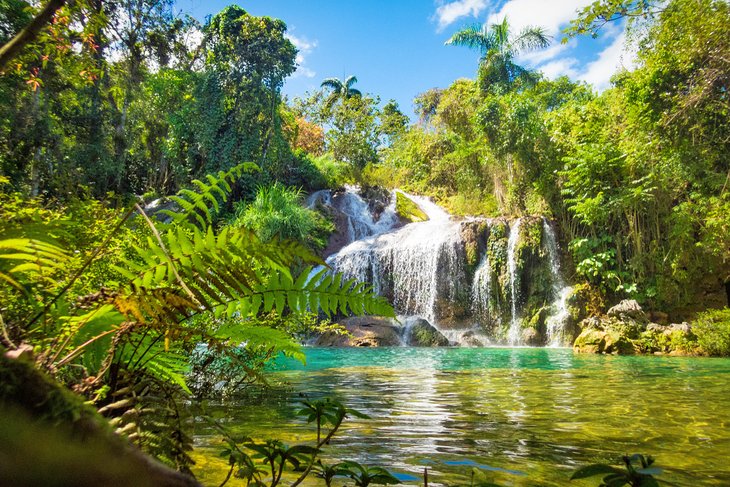
* RECOMIENDENOS A SUS AMISTADES * PREFIERA A NUESTROS SPONSORS.*


ARGENTINA Y CUBA: RELACIONES ENTRE LAS REPUBLICAS. SUMARIO HISTORICO
Las relaciones Argentina–Cuba se refiere a las relaciones diplomáticas entre la República Argentina y la República de Cuba. Ambas naciones son miembros de la Asociación Latinoamericana de Integración, Comunidad de Estados Latinoamericanos y del Caribe, Naciones Unidas y la Organización de Estados Americanos.
HISTORIA DE LAS RELACIONES DIPLOMATICAS
Argentina y Cuba comparten una historia común en el hecho de que ambas naciones fueron una vez parte del Imperio español. En 1816, Argentina obtuvo su independencia y en 1902, Cuba obtuvo su independencia después de la Guerra hispano-estadounidense. El 12 de mayo de 1909, Argentina y Cuba establecieron oficialmente relaciones diplomáticas. Inicialmente, las relaciones eran limitadas entre ambas naciones debido a sus distancias geográficas.
Al trinfo de la revolucion en enero de 1959, Fidel Castro ingresó a La Habana y tomó el control del país. Después de la revolución, Argentina mantuvo relaciones con el nuevo gobierno cubano y en mayo de 1959, Castro hizo una visita a Argentina y se reunió con el Presidente argentino Arturo Frondizi. En agosto de 1961, el comandante revolucionario cubano nacido en Argentina, Ernesto “Che” Guevara regresó secretamente a Argentina durante unas horas y se reunió con el Presidente Arturo Frondizi y una tía suya antes de abandonar el país.
En diciembre de 1961, Cuba se declaró marxista y socialista, y se alineó con la Unión Soviética. Como resultado, y por presión de los Estados Unidos, el 21 de enero de 1962, Cuba fue expulsada de la Organización de los Estados Americanos (OEA) y en septiembre de 1962, los Estados Unidos impusieron un embargo total sobre Cuba. Ese mismo año, por insistencia estadounidense, Argentina y todas las naciones latinoamericanas (con la excepción de México) rompieron relaciones diplomáticas con Cuba en un esfuerzo por aislar al gobierno de Castro.
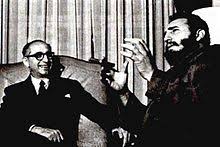
El 28 de mayo de 1973, bajo el Presidente Héctor Cámpora, Argentina se convirtió en la tercera nación (después de Chile y Perú) en restablecer relaciones diplomáticas con Cuba. El expresidente cubano Osvaldo Dorticós Torrado se convirtió en embajador a la Argentina. Las relaciones entre ambas naciones mejoraron enormemente bajo la presidencia de Juan Perón. Argentina le otorgó a Cuba un crédito de $200 millones de dólares por año durante seis años. Durante la dictadura militar argentina (1976-1983), Cuba mantuvo relaciones con Argentina.
Durante la Guerra de las Malvinas entre Argentina y el Reino Unido entre abril-junio de 1982; Cuba apoyó los derechos de Argentina sobre las Islas Malvinas y canalizó armas a Argentina desde Libia a través de Brasil.
LOS “MONTONEROS” ARGENTINOS EN CUBA
Los Montoneros fue una organización guerrillera argentina que se identificaba con la izquierda peronista y que desarrolló la lucha armada entre 1970 y 1979, aunque su período de máximo poder se extendió hasta 1976.
Hacia fines de la década de 1960 los tres principales dirigentes de este grupo -Mario Firmenich, Roberto Cirilo Perdía y Fernando Hugo Vaca Narvaja- vivían ocultos en el sótano de la embajada cubana en la Ciudad de México , luego de que un comando militar argentino intentara asesinarlos en este país.
Sus objetivos iniciales fueron la desestabilización del gobierno de facto autodenominado “Revolución Argentina” (Onganía, Levingston, Lanusse / 1966 – 1973) y el retorno al poder del general Juan Domingo Perón; posteriormente, una vez que asumió la presidencia Héctor José Cámpora sus acciones se dirigían a la instauración en la Argentina de un sistema político que denominaban “Socialismo Nacional”.
El gobierno cubano jugó un papel fundamental en el desarrollo de la guerrilla argentina, en el marco de un vasto plan para exportar la revolución a toda la región. Había un organismo cubano, el Departamento América, que se ocupaba de este asunto, al mando del comandante Manuel Piñeiro, “Barbarroja”, que funcionó hasta 1991. En Cuba fueron entrenados varios de los jefes guerrilleros. Por ejemplo, Fernando Abal Medina, el primer jefe de Montoneros, y su pareja, Norma Arrostito, “Gaby”. Toda la plana mayor de las Fuerzas Armadas Revolucionarias, las FAR, hizo cursos de entrenamiento, tanto político como militar, en la Isla. La comandancia montonera funcionaba desde Cuba.

Después que el segundo contingente de las organizaciones terroristas viajó a Cuba para recibir instrucción, se hizo mas frecuente la presencia en la isla de los militantes de la organización Montoneros, aparecida públicamente en 1969. ( En 1964 el gobierno argentino informó que 300 efectivos argentinos ya se habían instruído en Cuba. Por otra parte en 1967 y 1967 concurrieron más de 180 argentinos a la “Tricontinental” y a la “OLAS” en la Habana ( Ver EL BOTIN DE LOS MONTONEROS EN CUBA)
VISITAS PRESIDENCIALES
En octubre de 1986, el Presidente argentino Raúl Alfonsín realizó una visita oficial a Cuba, convirtiéndose en el primer presidente argentino en hacerlo. En 1995, Castro regresó a Argentina para asistir a la 5ta Cumbre Iberoamericana en Bariloche donde se reunió con el Presidente argentino Carlos Menem. Las relaciones entre ambas naciones se tensaron cuando en 1997, durante la 7ª Cumbre Iberoamericana en la Isla de Margarita, Venezuela, el Presidente Menem pidió la democracia en Cuba y el fin de las violaciones de derechos humanos en la isla.8 En noviembre de 1999, el Presidente Menem se negó a asistir a la IX Cumbre Iberoamericana que se celebraba en La Habana.
Las relaciones entre Argentina y Cuba mejoraron durante la presidencia de Néstor Kirchner. En 2003, Fidel Castro regresó a Argentina para asistir a la toma de posesión del Presidente Kirchner. Castro regresó por última vez a Argentina en 2006 para asistir a la cumbre Mercosur en Córdoba. En julio de 2006, el hermano menor de Fidel, Raúl Castro, asumió el cargo de Presidente interino de Cuba y en 2008, Raúl se convirtió en Presidente oficial de Cuba. En 2009, la Presidenta argentina Cristina Fernández de Kirchner visitó Cuba y visitó a Fidel y Raúl Castro. La Presidente Fernández de Kirchner volvería a visitar Cuba en 2013.
En diciembre de 2015 Mauricio Macri se convirtió en Presidente de Argentina. En octubre de 2016, los presidentes Raúl Castro y Mauricio Macri se reunieron en Cartagena de Indias, Colombia. Ambos líderes asistieron como testigos de la firma del tratado de paz entre el Gobierno colombiano y las Fuerzas Armadas Revolucionarias de Colombia (FARC). Durante su reunión, ambos presidentes anunciaron que los dos gobiernos esperan llegar a un acuerdo sobre la deuda pendiente de Cuba con Argentina de $11 mil millones de dólares de su deuda original de $1.3 mil millones de dólares que Cuba pidió prestada en 1973 (más intereses impagos).

Presidente Argentino: Alberto Fernandez (2019).
Presidente Raúl Alfonsín (1986)
Presidenta Cristina Fernández de Kirchner (2009, 2013)
Presidente de Cuba Fidel Castro (1959, 1995, 2003, 2006)
Presidente Miguel Díaz-Canel (2019)
Hay vuelos directos entre Argentina y Cuba con Cubana de Aviación.
Relaciones comerciales
En 2017, el comercio entre las dos naciones sumó más de $200 millones de dólares. Las exportaciones de Argentina a Cuba se basan principalmente en alimentos, mientras que las exportaciones cubanas a Argentina son principalmente productos farmacéuticos y medicamentos.
Misiones diplomáticas residentes
Argentina Argentina tiene una embajada en La Habana.
Cuba tiene una embajada en Buenos Aires.
Agencies/ Wiki/ Various/ Internet Photos/ Arnoldo Varona/ www.TheCubanHistory.com
THE CUBAN HISTORY, HOLLYWOOD.

* RECOMIENDENOS A SUS AMISTADES * PREFIERA A NUESTROS SPONSORS.*






